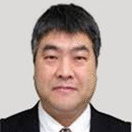RESEARCH ARTICLE
Evaluating Optic Nerve Damage: Pearls and Pitfalls
Paul J. Mackenzie*, Frederick S. Mikelberg
Article Information
Identifiers and Pagination:
Year: 2009Volume: 3
First Page: 54
Last Page: 58
Publisher ID: TOOPHTJ-3-54
DOI: 10.2174/1874364100903010054
Article History:
Received Date: 17/4/2009Revision Received Date: 15/4/2009
Acceptance Date: 20/4/2009
Electronic publication date: 17/9/2009
Collection year: 2009

open-access license: This is an open access article distributed under the terms of the Creative Commons Attribution License (http://creativecommons.org/licenses/by-nc/3.0/), which permits unrestrictive use, distribution, and reproduction in any medium, provided the original work is properly cited.
Abstract
Primary open-angle glaucoma is a progressive optic neuropathy involving loss of retinal ganglion cells and their axons at the level of the optic nerve head. This change manifests as thinning and excavation of the neural tissues and nerve fiber layer. Therefore, it has long been known that the structural appearance of the optic nerve head is paramount to both glaucoma diagnosis and to the detection of progression [1-4]. Quantitative imaging methods such as Heidelberg Retinal Tomography (HRT) and Ocular Coherence Tomography (OCT) show great promise for the diagnosis and management of glaucoma and as these technologies continue to improve, they will become more important in the care of glaucoma. However, these tests cannot replace good clinical examination and indeed they depend upon clinical correlation for correct interpretation. Thus, careful and systematic clinical examination of the optic nerve remains a cornerstone of glaucoma management. In this paper, we outline a few pearls for the examination of the optic nerve and some of the pitfalls to be avoided in optic disc examination.






